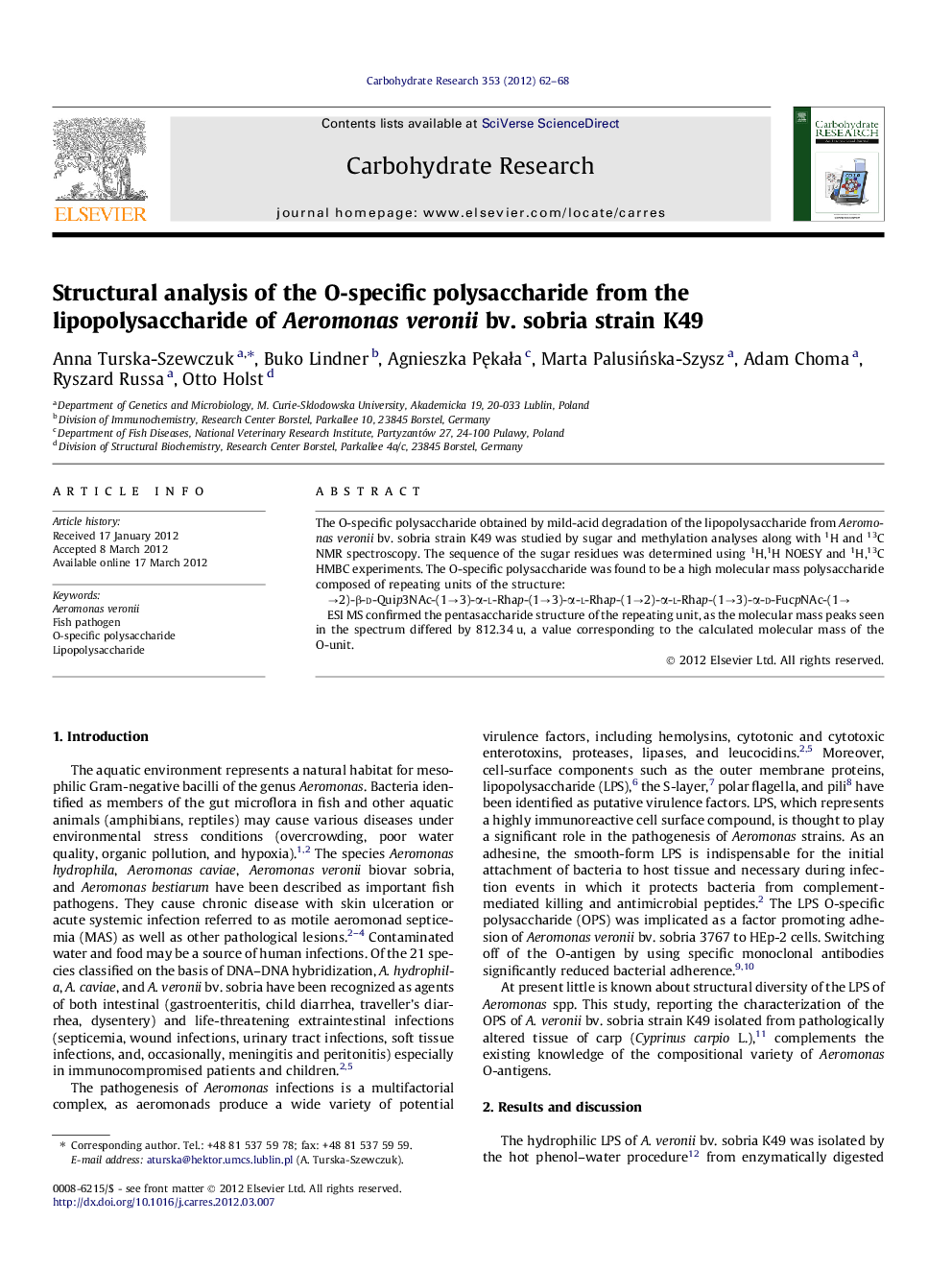| Article ID | Journal | Published Year | Pages | File Type |
|---|---|---|---|---|
| 1384146 | Carbohydrate Research | 2012 | 7 Pages |
The O-specific polysaccharide obtained by mild-acid degradation of the lipopolysaccharide from Aeromonas veronii bv. sobria strain K49 was studied by sugar and methylation analyses along with 1H and 13C NMR spectroscopy. The sequence of the sugar residues was determined using 1H,1H NOESY and 1H,13C HMBC experiments. The O-specific polysaccharide was found to be a high molecular mass polysaccharide composed of repeating units of the structure:→2)-β-d-Quip3NAc-(1→3)-α-l-Rhap-(1→3)-α-l-Rhap-(1→2)-α-l-Rhap-(1→3)-α-d-FucpNAc-(1→ESI MS confirmed the pentasaccharide structure of the repeating unit, as the molecular mass peaks seen in the spectrum differed by 812.34 u, a value corresponding to the calculated molecular mass of the O-unit.
Graphical abstract→2)-β-d-Quip3NAc-(1→3)-α-l-Rhap-(1→3)-α-l-Rhap-(1→2)-α-l-Rhap-(1→3)-α-d-FucpNAc-(1→Figure optionsDownload full-size imageDownload as PowerPoint slideHighlights► The first OPS of the fish pathogen Aeromonas veronii bv. sobria is determined. ► ESI MS is used to establish the molecular mass of the repeating unit = 812.343 u. ► The OPS is composed of one FucpNAc, one Quip3NAc, and three Rhap, residues. ► Components of the repeating unit form a linear pentasaccharide. ► Studies of Aeromonas O-antigens advance the identification of aquatic bacteria.
